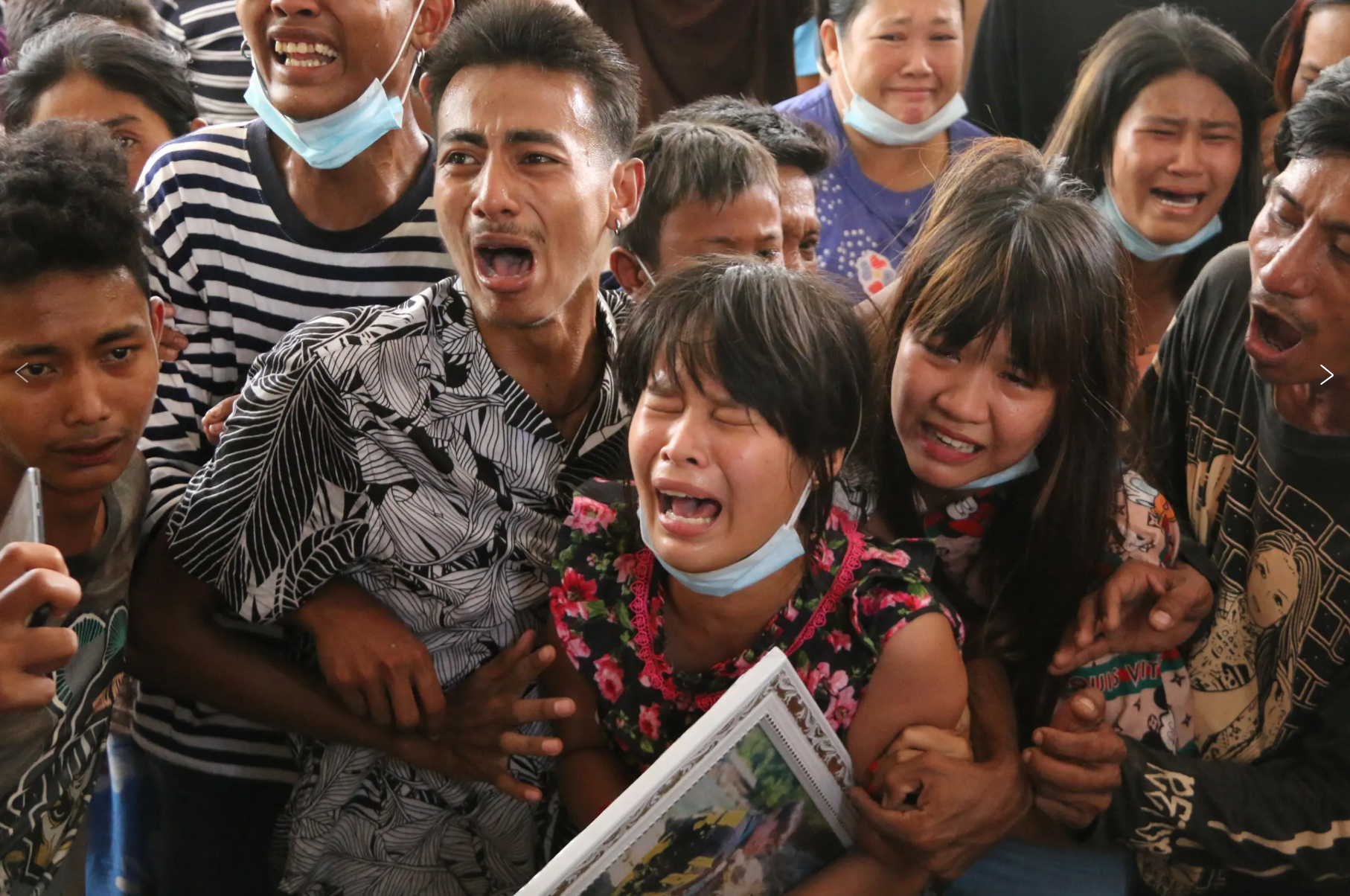Student Investigations Lab Project
The Investigations Lab collaborated with the Associated Press on an open source investigation of how Myanmar’s military junta used dead bodies as tools of terror to repress pro-democracy activists. This work showed that since the beginning of the military coup in February 2021, security forces in Myanmar systematically used the bodies of victims they killed to terrorize the opposition to the military junta.
Left: In this April 1, 2021 photo provided by Dawei Watch news outlet, a man raises his hand with a clenched fist as he carries the coffin of 17-year old Kyaw Min Latt during a funeral procession in Dawei, Myanmar. Since the military seized control of Myanmar in a takeover on Feb. 1, more than 825 people have been killed, well over two times the official tally, according to watchdog group Assistance Association for Political Prisoners. Image by Dawei Watch via AP.

Partners


Myanmar’s Junta Using Bodies to Terrorize
An analysis by The Associated Press and the Human Rights Center Investigations Lab at the University of California, Berkeley, looked at cases where bodies of those targeted indiscriminately by police and the military are being used as tools of terror. The findings are based on more than 2,000 tweets and online images, in addition to interviews with family members, witness accounts, and local media reports. The AP and HRC Lab identified more than 130 instances where security forces appeared to be using corpses and the bodies of the wounded to create anxiety, uncertainty, and strike fear in the civilian population. Over two-thirds of those cases analyzed were confirmed or categorized as having moderate or high credibility, and often involved tracking down the original source of the content or interviewing observers.
The HRC Lab examined hours of footage posted online over a two-month period showing dead bodies being snatched off the streets and dragged like sacks of rice before being thrown into vehicles and driven to unknown destinations. Some people have been disappeared or arrested one day and returned dead the next, their corpses mutilated with signs of torture, witnesses confirmed to AP.
HRC Lab researchers found and analyzed open source information and media reports following the military coup, identifying 130+ unique incidents that depict security forces killing people and taking their bodies during street protests, neighborhood raids, checkpoint stops, and other contexts. In their analysis, researchers found that over two-thirds of those cases analyzed were verified as having moderate or high credibility. The Lab team’s analysis of online content revealed a consistent pattern of behavior by the Myanmar junta’s security forces. Junta forces were observed: arresting members of the opposition who then often die in custody; returning the bodies of protesters arrested in demonstrations with apparent signs of torture on their bodies; seizing the bodies of deceased protesters and sometimes returning bodies to families with signs of desecration or post-mortem operation; issuing false death certificates to exonerate the junta; dropping off dead bodies at busy intersections to intimidate the pro-democracy movement; exhuming the bodies of deceased protesters without family permission, and cremating the bodies of those killed by junta forces without family permission.
Team Acknowledgements
Investigation Leads: Brian Nguyen and Devon Lum
Staff Advisors: Andrea Lampros and Stephanie Croft
Student Contributors: Karina Nguyen, Maeve Sneddon, Avani Yadav, Subuk Hasnain, Shealyn Massey, Tanya Tandon, and Briana Zhuang
News

May 25, 2021
Myanmar’s junta uses bodies as tools of terror
Investigations Lab in the News — Associated Press: Myanmar’s junta uses bodies as tools of terror, reporting with Investigations Lab research. Left: In this April 1, 2021 photo

May 26, 2021
Myanmar’s junta using bodies to terrorize
Investigations Lab in the News — Associated Press: Myanmar’s junta using bodies to terrorize. Left: In this April 1, 2021 photo provided by Dawei Watch news outlet, Hnin Twel Tar Aung,